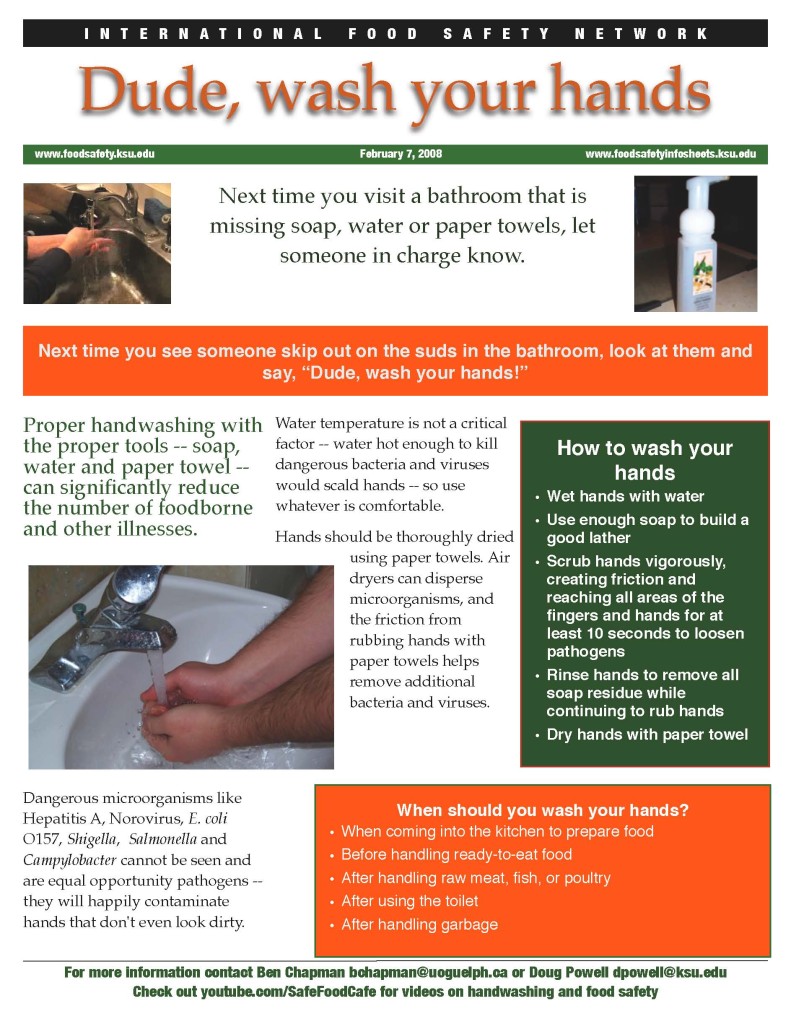I have no problem with who funds research, as long as there is full disclosure and the methodology is available for critique in a peer-reviewed journal. That would be the public part.
 The Daily Mail in the UK thinks readers are too dumb to ask for references, and begins with, “Paper towels are the most hygienic way to dry hands after going to the loo, a study has found.”
The Daily Mail in the UK thinks readers are too dumb to ask for references, and begins with, “Paper towels are the most hygienic way to dry hands after going to the loo, a study has found.”
It took The Mirror to note that the University of Westminster’s snappily-titled study ‘Comparison of different hand-drying methods: the potential for airborne microbe dispersal and contamination‘ was published in the March 2015 edition of The Journal of Hospital Infection.
The research was commissioned by paper towel manufacturers and claims that single-use towels are the most hygienic way to dry off.
It probably is.
The research also claims that bathroom air dryers may be blasting bacteria directly into the faces of children.
However, a major hand dryer manufacturer has disputed the claims, calling the research “flawed”.
The university’s study was undertaken by leading microbiologist Keith Redway of the University’s Department of Biomedical Sciences and looked at the potential for microbial contamination from hand drying and the potential risks for the spread of microbes in the air, particularly if hands are not washed properly.
 The peer-reviewed research – which was commissioned by the European Tissue Symposium (ETS) – used four different hand drying methods and three different test models to compare differences between the drying methods and their capacity to spread microbes from the hands of users potentially to other people in public washrooms.
The peer-reviewed research – which was commissioned by the European Tissue Symposium (ETS) – used four different hand drying methods and three different test models to compare differences between the drying methods and their capacity to spread microbes from the hands of users potentially to other people in public washrooms.
Paper towels, a textile roller towel, a warm air dryer and a jet air dryer were compared using three different test models: acid indicator using lemon juice, yeast, and bacterial transmission from hands when washed without soap.
The University of Westminster scientists found that the jet air dryer spread liquid from users’ hands further and over a greater distance – up to 1.5 m – than the other drying methods.
They also recorded the greatest spread of microbes into the air at both near and far distances for each of the tested models.
Levels recorded at close distance for a jet air dryer revealed an average of 59.5 colonies of yeast compared with an average of just 2.2 colonies for paper towels.
At a distance of 0.2 m the jet air dryer recorded 67 colonies of yeast compared with only 6.5 for paper towels. At a distance of 1.5 m the jet air dryer recorded 11.5 colonies of yeast compared to zero for paper towels.
The research also looked at the body height at which microbes were spread by air dryers.
It found the greatest dispersal was at 0.6 – 0.9 m from the floor, the face height of small children who might be standing near the dryer when a parent is drying his or her hands.
Leading researcher Keith Redway said: “These findings clearly indicate that single-use towels spread the fewest microbes of all hand-drying methods.
“Cross contamination in public washrooms is a legitimate public health concern. The extent to which jet air dryers disperse microbes into the washroom environment is likely to have implications for policy guidance to facilities managers operating in a wide range of environments from sports venues and airports through to schools and hospitals.”
But Dyson, a major hand dryer manufacturer, strongly disputes the study’s findings.
A spokesperson said: “The paper towel industry has consistently failed to invent new technology or respond to environmental concerns.
“Paper towels are costly to buy and replace, and are rarely recycled, meaning they are sent to landfill or incinerated. To argue their case, the paper towel industry is continuing to commission research with flawed methodology.
“A study conducted by Campden BRI’s (an independent membership-based organisation carrying out research and development for the food and drinks industry worldwide) hygiene specialists found that there are no practical differences between any of the hand drying techniques investigated (paper towels, conventional air dryers and the Dyson Airblade) with regard to microbial aerosol generation.
“The very low numbers of airborne microbes resulting from use of each of the hand dryers would make an insignificant contribution to the overall background microbial loading of the air.”


 that’s up from 45 percent in 2009 when the same question was asked.
that’s up from 45 percent in 2009 when the same question was asked. bacterial growth. The volunteers were then asked to dry their hands using either hand towels or one of three hand dryers, with or without rubbing their hands together, and levels of bacteria were re-measured.
bacterial growth. The volunteers were then asked to dry their hands using either hand towels or one of three hand dryers, with or without rubbing their hands together, and levels of bacteria were re-measured..jpg) Daughter Courtlynn – the 14-year-old – arrived from Canada last night for a last-minute weekend bonding session with Sorenne. And Amy. And me?
Daughter Courtlynn – the 14-year-old – arrived from Canada last night for a last-minute weekend bonding session with Sorenne. And Amy. And me?